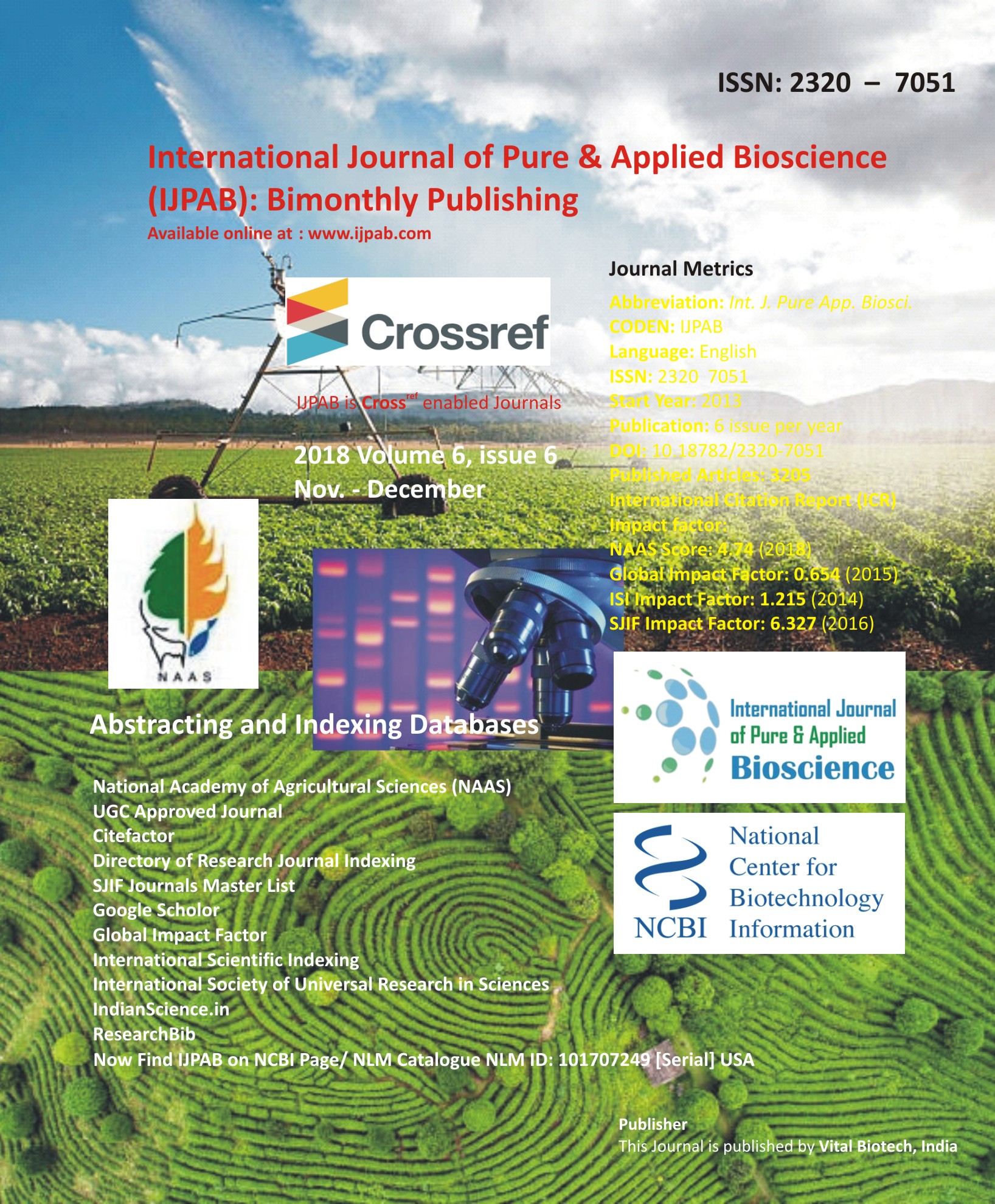
-
No. 772, Basant Vihar, Kota
Rajasthan-324009 India
-
Call Us On
+91 9784677044
-
Mail Us @
editor@ijpab.com
International Journal of Pure & Applied Bioscience (IJPAB)
Year : 2018, Volume : 6, Issue : 6
First page : (1019) Last page : (1026)
Article doi: : http://dx.doi.org/10.18782/2320-7051.7202
Socio-Demographic Profile and Dietary Diversity of Middle Income Households in the Rural-Urban Gradient of Bengaluru
Vijayalakshmi D.1, Geetha K.2 and Shilpa Yatnatti3*
1Professor (HAG), Dept. Food science and Nutrition, UAS, GKVK, Bengaluru
2Professor and Head (AICRP-Home science), Dept. Food science and Nutrition, UAS, GKVK, Bengaluru
3*Senior Research Fellow, Dept. Food science and Nutrition, UAS, GKVK, Bengaluru
*Corresponding Author E-mail: vijaylakshmid@yahoo.com
Received: 7.10.2018 | Revised: 13.11.2018 | Accepted: 21.11.2018
ABSTRACT
Socio-demographic study involves characteristics of population such as age, gender, education, occupation, income and expenditure pattern. Urbanization is the increasing share of a nation’s population living in urban areas, which is generally happening as a result of net rural to urban migration. Demographic and socio-economic changes influence the life style, working culture and food consumption behaviour of the people. Present study investigated socio-demographic profile and dietary diversity among households in the rural-urban interface of Bangalore. From north and south regions of Bengaluru, 300 households comprising of rural (100), transition (100) and urban area (100) were selected. Standardized questionnaire was applied to elicit data on socio-demographic profile of household members. Household Dietary Diversity Scores (HDDS) are calculated by summing the number of food groups consumed at the household over 24 hour recall period. Majority of the family members belonged to middle age group (40%), nuclear family (60%) and small family size (50%). Across the rural- urban gradient significant changes were observed in family type (χ2 =7.86*) and family size (χ2= 16.19*). Gender-wise distribution was equal and majority of them studied up to secondary school (23.7-28.3%). Agriculture was predominant occupation in rural (82%) as against urban with non-agriculture (88%). Mean expenditure for food and grocery items was maximum in all the three study areas and ranged from Rs.4550-5131per month. Significant difference in average monthly expenditure for household equipment (3.83*), communication (6.71*), recreation and culture (3.94*) restaurants and hotels (5.81*) and miscellaneous (9.89*) was observed across rural-urban gradient. Mean HDDS was slightly higher for urban (10.43) compared to rural (9.25). These findings exhibit the changing patterns in the socio-demographic characteristics and dietary diversity among the selected households as result of urbanization.
Key words: Rural-urban gradient, Socio-demographic profile, Dietary diversity, SES.
Full Text : PDF; Journal doi : http://dx.doi.org/10.18782
Cite this article: Vijayalakshmi, D., Geetha, K. and Yatnatti, S., Socio-Demographic Profile and Dietary Diversity of Middle Income Households in the Rural-Urban Gradient of Bengaluru, Int. J. Pure App. Biosci.6(6): 1019-1026 (2018). doi: http://dx.doi.org/10.18782/2320-7051.7202

